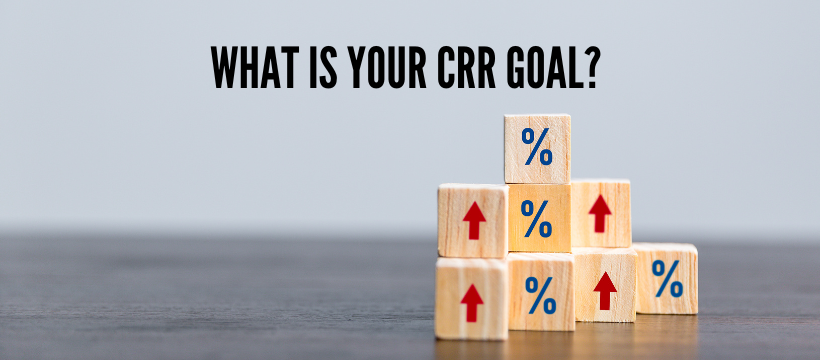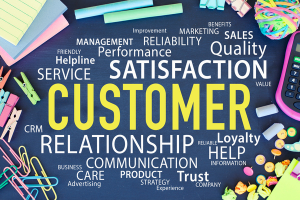Navigating Customer Retention Rate Goals Across Industries
In the ever-evolving landscape of business, customer retention has emerged as a critical indicator of success. But what should your goals be when it comes to your business’s customer retention rate? Is there a one-size-fits-all approach, or does it vary across industries? In this blog, we’ll explore the nuances of setting customer retention rate goals and delve into whether these goals should be uniform or tailored to different industries.
Understanding Customer Retention Rate
Before diving into the intricacies of goal-setting, let’s revisit what the customer retention rate entails. In essence, it measures the percentage of customers who continue to engage with your business over a specific time period. A high retention rate implies that your customers are satisfied, loyal, and inclined to make repeat purchases.
The Goal-Setting Conundrum: Uniform or Tailored?
When it comes to establishing customer retention rate goals, the answer is not a straightforward “one-size-fits-all.” The ideal retention rate can vary based on industry, customer behaviour, and the nature of your business. Here’s a balanced perspective on both sides of the debate:
Uniform Goals:
Advocates of uniform customer retention rate goals argue that a standard benchmark is essential for measuring success across industries. They assert that aiming for a universally high retention rate – say, 80% or more – ensures that companies consistently prioritize customer satisfaction, regardless of their sector. This approach is rooted in the belief that loyal customers are vital regardless of whether you’re selling products, services, or experiences.
Tailored Goals:
On the other hand, proponents of tailored customer retention rate goals contend that industry nuances necessitate customized targets. Different industries have distinct customer behaviours, competition levels, and expectations. A realistic retention rate for a subscription-based business may not be the same as that for a retail store. This perspective recognizes that customer behaviour can differ widely and aims to set achievable goals based on these differences.
Industry Insights: Factors to Consider
While the debate between uniform and tailored goals continues, there are industry-specific considerations that can influence your customer retention rate objectives:
1. Subscription Services:
For businesses offering subscription-based services, customer retention is paramount. Aiming for a higher retention rate – around 90% – is often the norm. Customers in this industry expect consistent value and personalization, making loyalty a cornerstone of success.
2. E-Commerce and Retail:
In the retail sector, customer behaviour can be diverse, influenced by trends, pricing, and convenience. Aiming for a retention rate of around 70% to 80% could be considered realistic. Frequent communication, tailored offers, and exceptional customer service can contribute to achieving this goal.
3. Hospitality and Travel:
The hospitality industry heavily relies on repeat business. Aim for a retention rate between 70% and 80%, with personalized experiences, loyalty programs, and positive guest interactions as key drivers.
4. SaaS and Technology:
The software-as-a-service (SaaS) industry is characterized by customer relationships centered around technology solutions. Aiming for a retention rate of 85% or higher is common, driven by consistent innovation, user-friendly interfaces, and responsive support.
5. Professional Services:
Industries such as consulting, legal, and accounting often thrive on trust and expertise. Aiming for a retention rate of 75% to 85% can be reasonable, with a focus on building long-term relationships and exceeding client expectations.
Factors Influencing Retention Goals:
Several factors beyond industry-specific nuances can impact the goals you set for your business’s customer retention rate:
Customer Expectations: Understand what your customers expect and value from your business. Align your retention efforts with these expectations.
Competition: Analyze how your retention rate compares to competitors within your industry. Strive to be competitive while also focusing on differentiation.
Customer Lifetime Value (CLV): Consider the impact of customer retention on CLV. Higher retention rates contribute to higher CLV, influencing the potential profitability of each customer.
Customer Acquisition Costs (CAC): Compare the cost of acquiring new customers with retaining existing ones. A higher retention rate can lead to reduced CAC in the long run.
The Balancing Act
Ultimately, the goal-setting process for your business’s customer retention rate requires a delicate balance. While uniform benchmarks underscore the importance of customer loyalty across industries, tailored goals respect the uniqueness of your business and its customer base. Industry dynamics, customer expectations, and competitive landscapes all play a role in determining the most suitable retention rate goals for your specific context. Strive for excellence in customer retention while remaining attuned to the intricacies of your industry. After all, the ultimate goal is to foster lasting relationships, nurture loyalty, and secure your business’s enduring success.







